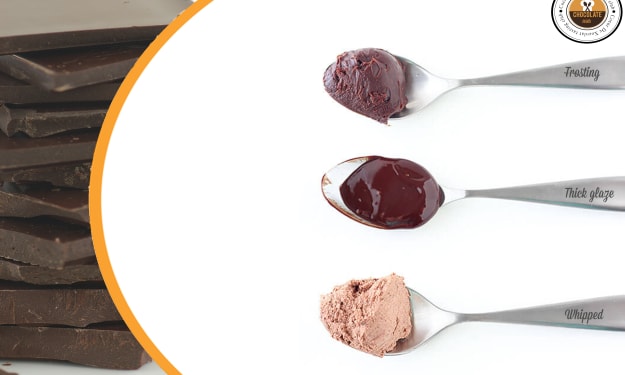Chocolate Bloom Explained
Why is there a white coating on my chocolate?

What’s that coating of white stuff on my Chocolate?
This is a question I get asked a lot when I am leading a chocolate team-building workshop or tasting session.
Sometimes, when we unwrap a chocolate bar, we can find that it’s been covered by an unattractive white or grey coating. It won’t kill you but it doesn’t look as we expected it to look and it doesn’t taste as we expected it to. It melts too quickly on your fingers, it makes a mess crumbling and flaking, it feels waxy in your mouth, its just not chocolate.
Well it is still chocolate, but it has gone through a scientific change, the white powder or film you can see is described as a bloom; it can be a fat bloom or a sugar bloom. They never look pretty, but the chocolate isn't spoiled it just needs some attention and TLC.
Sugar and fat blooms are a normal chemical change that happen in chocolate when it changes temperature. I will try to explain some of the reasons they occur.
It is caused by:
- Bad tempering (incorrect or incomplete) of the chocolate.
- Poor attention to the correct cooling procedures, including:
- covering cold centres with chocolate.
- By having soft fats in the centres of chocolate-covered confections.
- Warm storage conditions (above 18c, by adding fats that are not compatible with cocoa butter.
- Abrasion and finger marking
The science is chocolate contains 6 main polymorphic crystals, each one allows the chocolate to be something different. Only one works for moulded chocolate, the beta 5 crystal which when present gives a shiny surface, the chocolate retracts from the mould and has a pronounced snap when broken.
The first bloom I will explain is Sugar bloom. This happens when chocolate is exposed to moisture. Sugar loves water and will soak up any moisture it can find. We can see this if we make a cup of tea, add sugar, stir the tea and put the spoon back in the sugar bowl. We find the spoon covered in sugar.When we store chocolate in warm or moist conditions, the sugar draws any moisture that is present in the atmosphere and gets wet, and then this dries on the surface of the chocolate as fine crystals. As it dries, it covers the chocolate with a dry, spotted, white powder coating that can look like mould. Sugar bloom can be avoided by keeping chocolate away from moisture and storing it in a cool, dry spot (not the fridge).
Next, Fat bloom. This happens when the fat (cocoa butter) in the chocolate moves to the surface of the chocolate and can make it feel sticky. It usually occurs because of bad storage conditions ― chocolate hates temperature fluctuations they can cause the fat to migrate to the surface ― but it is more often as a result of mistakes made during the chocolate tempering process. To temper dark chocolate correctly, the temperature of melted chocolate has to be steadily raised to 45c and lowered to 28c then raise to 31c to create uniform cocoa butter crystals Beta 5. If this isn’t done right, the cocoa butter crystals will form in different sizes and show as a fat bloom on the surface.
If you want to avoid bloom all together, buy single origin chocolate, follow the tempering process, and store it out of strong light between 15-18c (not in the fridge).
If your chocolate has bloomed, it can be re-tempered ready to mould again, or melted into milk turning it into a real hot chocolate drink or even used as a dip for a fondue.
About the Creator
David Greenwood-Haigh
Multi award-winning chocolatier with over forty years experience.fellow of the institute of hospitality, MasterChef member Craft Guild of Chefs Judges International chocolate awards, Academy of chocolate awards & Great taste awards






Comments
There are no comments for this story
Be the first to respond and start the conversation.